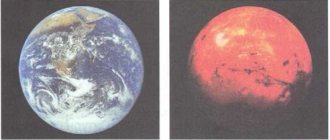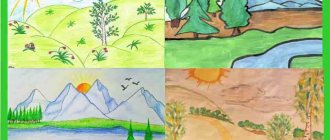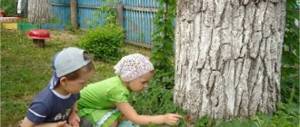1) Remember and tell us how people work in your city (village).
There are many industrial enterprises in my city.
They employ workers of various specialties - metallurgists, technologists, electricians, food and light industry workers, and energy workers. These people produce goods and services that everyone needs. Without their work, we would be deprived of all the achievements of modern civilization.
2) What sectors of the economy are represented in the photographs?
The photographs show the following industries: food industry, construction, metallurgy, crop production, trade, livestock farming, automotive industry
Economic tasks
Economic relations are the basis for running any economy, both state and family. The family economy is based on the division of responsibilities between family members, their and the correct distribution of family income. In a house where, for example, one person is responsible for cleaning the house, a second buys groceries, a third prepares food, and money is spent wisely, there will be prosperity, mutual understanding and well-being.
So it is with the state. Activities are divided into industries, which include enterprises engaged in the production of products and organizations providing services.
Human economic activity is divided into several types:
- industry;
- construction;
- Agriculture.
One sector of the economy is closely interconnected with another.
For example, transport is needed to bring factory materials to a construction site. It is used to transport agricultural products intended for processing. Thanks to trucks, goods reach warehouses, markets, and shops.
3) Tell us about them according to plan:
1) name of the industry;
2) what it produces;
3) what is the meaning for people;
4) what professions people work in this industry.
A story about the agricultural sector according to the plan for grade 2
1) Agriculture.
2) Produces various food products of plant and animal origin - grain, bread, vegetables, fruits, meat, milk, sausages and much more.
3) Provides people with food.
4) The industry employs combine operators, livestock breeders, milkmaids, grain growers, veterinarians, agronomists, and tractor drivers.
Spheres of the economy
Agricultural activities involve the production of products of plant and animal origin. Farms, cooperatives, fields are parts of one large sphere called agriculture . Domestic animals are bred there and provide meat, dairy products, and eggs.
Vast fields allow for the cultivation of crops, vegetables, cotton and flax for clothing and other household items. The berries and fruits people need will ripen in the gardens. Industry includes factories and factories where they make things without which a person cannot exist. These are food, clothing, shoes, household appliances, furniture, cars.
Everything produced must be sold, which is what trade does. The industry includes shops, markets, supermarkets. Another important area is construction.
People united in the construction industry create new factories, build residential buildings, hospitals, schools, bridges and much more. All areas are inextricably linked by transport, which is so necessary for moving people and transporting goods.
A story about the livestock industry according to plan for grade 2
1) Livestock.
2) One of the branches of agriculture. Produces meat, milk, cheeses, sausages, eggs, wool, honey.
3) Provides people with food and clothing.
4) The industry employs livestock breeders, veterinarians, milkmaids, shepherds, beekeepers, livestock specialists, horse breeders, poultry farmers and many others.
A story about the trade industry according to plan for 2nd grade
1) Trade.
2) Provides services for the sale of food, industrial and other household goods to the population.
3) Provides communication between product manufacturers and buyers.
4) The industry employs salespeople, cashiers, managers, loaders, stackers, sorters, and consultants.
A story about the industry according to plan for grade 2
1) Industry.
2) Produces various industrial goods: steel, rolled products, machinery and equipment, household appliances, cars, electronics, raw materials and much more.
3) Provides industrial goods and services other sectors of the economy.
4) The industry employs metallurgists, machine builders, miners, oil workers, mechanics, assemblers, welders, and power engineers.
Sectors of the economy
Each industry is of great importance to the economy and is in close interaction with other industries. All industries can be divided into two large groups: material production industries and service industries.
TOP 4 articles that are read along with this
- 1. Transport
- 2. Crop production
- 3. What is economics for?
- 4. What kind of industry is there?
The sectors of material production include:
- Industry . This is a set of enterprises engaged in the extraction and processing of natural raw materials, the production of energy, tools, and various consumer goods.
- Agriculture . This industry provides the population with food and valuable raw materials for various industries. Agriculture is well developed in almost all countries.
Rice. 2. Agriculture.
Service industries include:
- Construction . The main task of the industry is the construction of all kinds of buildings, structures and structures.
- Transport . One of the most important sectors of the economy, thanks to which cargo and passengers are transported both within the country and far beyond its borders.
- Trade . Carries out the purchase and sale, exchange of goods, as well as all related processes: customer service, delivery and storage of goods, preparing them for sale.
In addition to the listed main sectors of the economy, there are other areas: communications, housing and communal services, banking sector, catering, science and many others.
Rice. 3. Banking sector.
The tasks of forestry include the study and accounting of forests, their protection from fires, diseases and pests, control over their reproduction and use, and regulation of forest use.
5) Think about what sectors of the economy work so that we can drink a glass of milk in the morning.
Several sectors of the economy work so that we can drink a glass of milk in the morning.
Animal husbandry . Cows give milk.
Packaging industry. The milk is packaged in factory-made containers.
Transport. Milk is delivered to retail outlets.
Trade. Milk is on sale.
Mechanical engineering. A refrigerator is being manufactured.
Glass industry. A glass for milk is being made.
Technological map of the lesson of the surrounding world, grade 2 “What is economics”
Getting to know the meaning of the word “economy”.U. Where can you find the meaning of an unfamiliar word?
U. – You can go to the dictionary, go to the Internet, and enter the word “economy” in the search engine.
“And now we’ll find out for ourselves what economics is.”
Workbook page 67. Solve the crossword puzzle. What is it?
-The literal translation is “the art of housekeeping.”
— Even the ancient Greeks understood that farming had to be conducted according to certain laws and rules.
— Our country is also our home. Therefore, we will talk to you about the country's economy.
-Economy is the economic activity of people in a country or an economy.
-Everything is clearly distributed in the country’s economy. The entire economy is divided into parts called industries.
— Every day we come across different subjects of economics.
— Let's try to determine the name of different sectors of the economy by product groups.
1. So, our economy begins every day with the fact that every day we encounter different objects: clothes, shoes, furniture, books, food. Where is this produced for us? This branch is called industry.
2. Bread, milk, vegetables, meat? Where does this come to us from? ... Yes, from agriculture.
3. Another part of the economy, without which you and I could not live, since we would find ourselves on the street, there would be no factories, there would be no industry, since the machines would not be able to work all year round in the open air. This is construction.
4. But industry itself or agriculture did not come to our house. We purchased their products for money by going to various stores, markets, retail outlets, etc. What sector of the economy helped us? This is trade.
5. The economic sector also helped me and your parents to get to work if we live far away. How can we get to work? This is transport
-Result: I presented the economy of our country in the form of a tree. Here are the most basic sectors of the economy.
-Look at them carefully and answer the following question: are the parts of the economy interconnected??
Let's think about it. Tell me, what industries helped us so that we could drink a glass of milk in the morning?
Who is pictured?
-What is the name of the person who shepherds them?
-What happens when a cow eats grass? So, it’s time to…(milk) the cow.
-Who milks the cows?
— Guys, all this activity that we have discussed is called animal husbandry
- This is part of one of the sectors of the economy, which is called
agriculture.
Look at how many types of activities and professions are performed just to get milk. But her journey does not end there.
-Think about what people will do with the milk they got from cows?
-How can it get there? Who is driving the car?
-What is the name of a car with a tank body for transporting milk?
Guys, we are faced with another sector of the economy - which one? Transport.
What significance does it have?
Do you think agriculture is somehow related to transport?
-Where have we come with you?
-What is a dairy?
-What happens to milk after it has been processed? What are they doing to him?
-So we met another sector of the economy - the food industry.
The food industry processes products that come to it from agriculture and produces from them the products that we use for food.
The food industry is part of a large branch of the economy called industry.
-A lot of dairy products were prepared at the factory. Where will they be taken? We start the engines and go to the store.
Who works in the stores?
Does anyone know what this branch of the economy is called?
Yes, exactly trade
helps us purchase the goods and products that we need.
Where does the milk then go?
Look how long our milk has traveled before ending up in our home. How many different people worked, how much time has passed since his birth.
And look, in this example we are convinced that ALL industries are INTERCONNECTED.
7) Suggest a way to depict these connections using models. Make 1 - 2 models.
Connections between sectors of the economy can be shown with arrows, and the arrows will point in both directions, because any sector of the economy is dependent on other sectors.
An example of a model of relationships between economic sectors for grade 2
 Prepare reports on how different sectors of the economy operate in your region. Which of them are especially important for the life of your city (village)?
Prepare reports on how different sectors of the economy operate in your region. Which of them are especially important for the life of your city (village)?
In our region, agriculture, industry, and trade are of greatest importance.
Report on the work of the agricultural sector for grade 2
In our region, a significant share of the economy comes from agriculture, and specifically crop production.
Most of the territory of the region is occupied by agricultural fields. Various crops are grown on them - wheat, rye, corn, potatoes.
Vegetables are also grown in greenhouses in the region. And also fruits in the gardens.
Agriculture provides fresh and tasty products to the residents of our region.
Report on the work of the trade industry for grade 2
The trade industry plays an important role for the economy of our region. There is not a single city, not a single village where there are no shops selling food and industrial goods.
Without goods purchased from retail outlets, people would not be able to live; they would be deprived of the basic necessities - food, clothing, electronics, houses.
In our city there are many large and small shops, there are huge shopping centers where you can buy everything you need for a normal existence.
Report on the work of the livestock industry for grade 2
Livestock farming in our region plays an important role in the economy.
This industry is part of agriculture.
In our region there are many meat and dairy farms, poultry farms, pig farms, apiaries and fish farms.
Thanks to the development of livestock farming, residents of the region have the opportunity to always buy fresh meat, milk, cheeses, sausages, eggs, honey, and fish.
Livestock farming provides people with normal and healthy food.
Livestock products are also used to produce clothing and footwear.
Report on the work of the industry for grade 2
Our region is an important industrial center. Enterprises of the mining, manufacturing, chemical and light industries are concentrated here, as well as metallurgy and energy enterprises.
There are many large and small plants and factories in the region. They produce machinery and equipment, household appliances, electronics, sew clothes and shoes, produce medicines and petroleum products.
We mine coal, oil, gas, and metal ores.
Without these products, life in the city or village could not exist.
Industry and services
Any economic activity plays an important role in the development of the state. Sectors of the economy are divided into 2 types: material production and the service sector. The first is industry, it includes enterprises that extract and process raw materials, produce goods and tools from them. Example: agriculture supplies people with food and supplies raw materials for other industries.
The second type is the service sector, which is divided into many groups:
- Construction. Builds, repairs and restores houses.
- Transport. Thanks to it, passengers and goods are transported.
- Trade. Allows you to purchase, sell, exchange goods, and serves customers. Workers deliver products to stores and warehouses and prepare goods for sale.
- Forestry. He studies forests, protects them from fires, and develops methods to combat plant diseases and pests.
Industry consists of the main economic sectors of the country: these are plants and factories that extract natural raw materials.
Thanks to them, a person receives material for creating various objects. Industries are needed so that people can produce consumer goods.
The list of modern products is very large. A huge number of products are produced, from sweets to cars. People have the opportunity to use them.
What groups is the industry divided into:
- Mining. Minerals are obtained from the depths of the earth: ore, oil, gas and used for their intended purpose. The extractive industry includes mines and quarries.
- Processing. Engaged in processing raw materials to obtain the desired products. This includes factories and enterprises.
- Metallurgical. It is divided into 2 types: black and colored. The first mines ore, the second - other natural resources. The purpose of the iron and steel industry is to produce steel and cast iron objects.
- Fuel Mines coal and oil.
- Electric power industry. Thanks to it, a person uses light and has the opportunity to operate household appliances.
- Light industry. Specializes in the production of consumer products. These are clothes, shoes, bags, etc.
There are other groups too. The chemical industry produces a variety of products, including cosmetics and medicines. Forestry includes wood processing and paper production. Mechanical engineering is engaged in the production of mechanisms, tools, cars, trains, and airplanes. The military develops and produces military equipment. The building materials industry includes varnishes, paints, cement, bricks. Glass - mirror, dishes, porcelain, etc.
Construction is another important component in the development of the country's economy. The products of this industry are intended for long-term use; people use them from 10 to 100 years.
The construction of houses would be impossible without the existence of other sectors of the economy . Construction has a close connection with industry, which provides workers with machines, materials, and various structures.
9) Read the story. Find answers to the questions in it:
1) what was the first money;
The first money was very different. It could be animals, feathers, tobacco, animal skins. Then they began to make metal money from copper, silver, and gold.
2) what ancient metal money looked like;
Ancient money was in the form of bars, rods, rings, and ingots.
3) why did people start branding money?
The mark showed the purity of the metal, and later the place of minting and the country.
10) Come up with your own questions for the story and ask them to the guys. Evaluate your classmates' answers.
Questions and answers to the story “From the History of Money” for 2nd grade
1) Why did people start using metal money? – Because they were more convenient and allowed us to evaluate different goods.
2) Where did paper money appear? - In China.
3) What was depicted on the coins? – Portraits of kings, gods, coats of arms.
11) Complete the story if you know anything else about the history of money.
It is known that in many countries shellfish shells were used as money. Holes were pierced in them, strung on a thread and worn around the neck.
In Rus', sable skins were often used as money, which were also stacked in batches and counted in groups of forty pieces. This monetary unit was called forty.
12) In additional literature, on the Internet, find out what kind of money is used in different countries. Prepare your message.
A message about money from different countries for grade 2
Each country has its own currency. For example, in Russia we use the monetary unit Ruble, and its smaller part is called a kopeck.
In America, the dollar is used, which is one of the world currencies and is used in many countries.
Other countries also have their own dollars: the Canadian dollar, the Australian dollar.
The monetary unit of the European Union is the euro, it is a very young monetary unit, but it is also a world currency.
But a number of European countries have retained their own money in circulation - pounds sterling in Great Britain, francs in Switzerland, crowns in the Czech Republic and Sweden.
In Japan the currency is called the Yen, and in China it is the Yuan. Yuan is also one of the world currencies.
The monetary units of Angola - Kwanza, Guatemala - Quetzal, Gambia - Dalasi have interesting names.
But the most difficult to pronounce name for the currency in Bhutan is Ngultrum.
 Prepare reports on how different sectors of the economy operate in your region. Which of them are especially important for the life of your city (village)?
Prepare reports on how different sectors of the economy operate in your region. Which of them are especially important for the life of your city (village)? 





